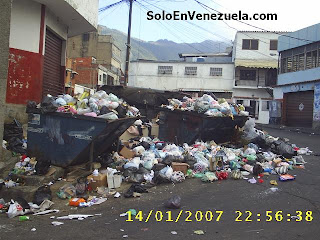Key Determinants:
Biological:
- Individual Factors: Age, Gender, Genetic Background and Underlying Diseases:
The host’s immune response, determined by
individual factors like age, gender, genetic background and underlying
diseases, plays a role in the clinical expression of DF/DHF. In Venezuela the incidence of DF has been the highest
among 10 to 14 year old children, peaking in 2007 (570/100,000) On the other
side, DHF highest incidence rates were observed among infants, peaking again in
2007 (62.9/100,000).
- Introduction of New and More Complex Secondary Vectors:
The number of countries with more than one viral stereotype circulating has steadily increased, favoring the occurrence of more cases of secondary infection and consequently and increase in the risk of DHF. Also, a potential additional risk is the introduction in the region of Ae. albopictus, an efficient dengue vector in Southeast Asia. Unlike Ae. aegypti, Ae. albopictus is not obligatorily anthropophilic and sometimes displaces the former from its habitat. This vector has been detected in several Latin American countries (Mexico, Honduras, Guatemala, Nicaragua, Panama, Cuba, Dominican Republic, Trinidad & Tobago, Brazil, and Bolivia); but thus far its presence has not been associated unequivocally with the increase in dengue transmission.
Social and Cultural:
Environmental:
Economic:
Social and Cultural:
- Mosquito Control is Virtually Non-Existing in the Society:
- Increased in Air Tavel
Environmental:
- Population Growth
- Inadequate and Unplanned Urbanization:
- Trash Accumulation and Poor Urban Sanitation
- Global Warming
Economic:
- Decreased Access to Healthcare
Complications in cases of classic dengue that lead to an increasing incidence of DHF are related to the misdiagnosis and mistreatment of the disease when the first symptoms appear. This is the most common in low socio-economic status classes that have a more limited access to healthcare.
Political:
- Deterioration of the Public Health Infrastructure
References:
Javier Torres and Julio Castro; El Impacto Económico y Sanitario del dengue en América Latina http://www.scielosp.org/pdf/csp/v23s1/04.pdf
Duane J. Gubler; Epidemic Dengue/Dengue Hemorrhagic Fever: A Global Public Health Problem in the 21st Century; http://203.90.70.117/PDS_DOCS/B0776.pdf
José Luis San Martin; The Epidemiology of Dengue in the Americas Over the Last Three Decades: A Worrisome Reality; http://new.paho.org/hq/dmdocuments/2010/Jan%202010%20AJTMH%20Dengue%20BZ%20GD%20AB%20OS%20JSL%20OB%20MGG.pdf


It's very interesting that you listed Global Warming as one of your key determinants, since I guess it is not one of the more obvious ones. I also found it interesting how many do not take simple primary preventions even when they know the high incidence of the fever.
ReplyDeleteI think some determinants like inadequate and unplanned urbanization can be very hard to control, but maybe with a better public health infrastructure some more effective prevention programs can be designed.
ReplyDeleteit is very interesting that there is basically no mosquito control, that seems like a fairly cheap problem to deal with, and also one that can contribute greatly to increased health. It's also interesting that you list global warming as a key determinant, I think global warming's effect on health is often over looked.
ReplyDeleteI liked your broad ranging key determinants, including global warming. I think you may want to tease out the access to health care into two or three separate determinants - we'll talk about it in lab.
ReplyDelete